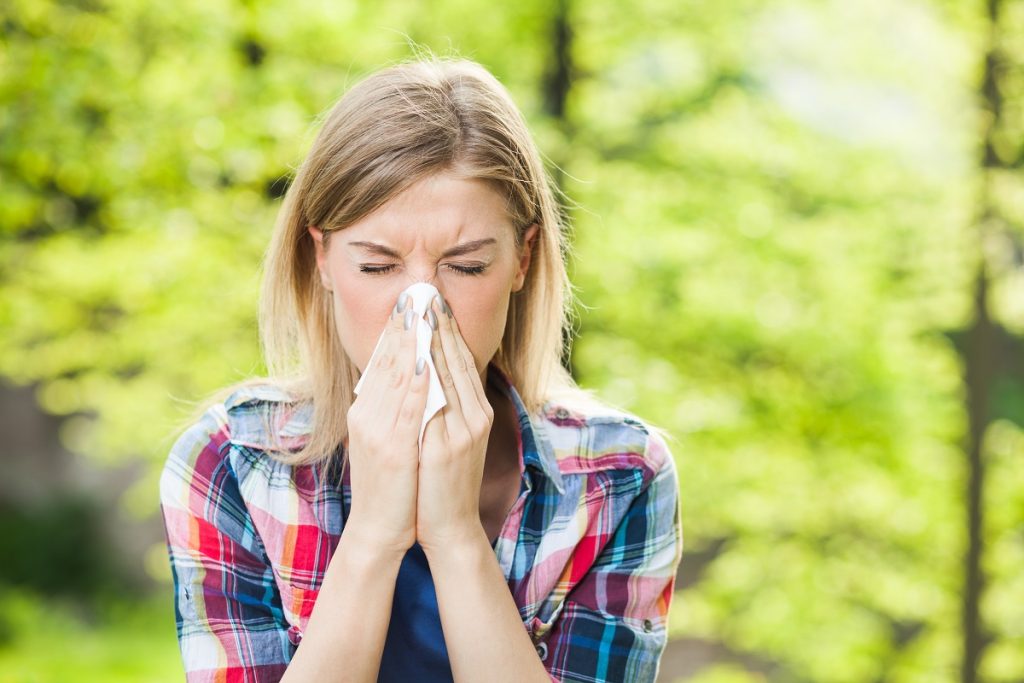- Allergies are common amongst adults and can be caused by inhaling irritants such as pollen, dust mites, pet allergens, and insect stings.
- Symptoms of allergies can range from mild to severe, including sneezing, itching eyes, runny nose, hives, and anaphylactic reactions.
- To prevent allergic reactions, it is vital to keep your clothes and environment clean, stay informed about the local allergen levels, and avoid contact with potential irritants.
- If allergies persist despite taking precautionary measures, consult a doctor for diagnosis and treatment.
Allergies can be a perplexing and frustrating topic for many people. Many adults might wonder why they suddenly have to deal with seasonal sniffles, rashes, or food sensitivities that never bothered them before. Understanding the most common reasons for allergic reactions in adults is the first step toward finding relief from these unwanted symptoms.
Allergies in American Adults
Allergies are a common phenomenon, affecting over 50 million Americans every year. But what are allergies, and how do they develop? Allergies occur when the immune system overreacts to certain substances called allergens, treating them as harmful invaders. This triggers a series of responses involving the release of chemicals like histamine, which cause classic allergy symptoms like swelling, itching, and sneezing. This means that anyone can have allergies regardless of their age.
Pollen Allergies
Pollen allergies, or seasonal allergic rhinitis, are also commonly known as hay fever. Pollen is released from various plants, such as trees, grasses, and weeds, during different seasons. This allergen enters our bodies primarily through inhalation and can cause symptoms such as sneezing, runny nose, congestion, itching, and watery eyes.
People with pollen allergies might also have a condition known as pollen-food allergy syndrome, whereby they experience itching and swelling in their mouths and throats upon consumption of certain fruits, vegetables, and nuts.

Pet Allergies
Pet allergies are prevalent among adults worldwide. People allergic to pets, particularly cats and dogs, are sensitive to proteins in the animal’s skin cells, urine, and saliva. Symptoms of pet allergies are similar to pollen allergies and can include sneezing, congestion, watery and itchy eyes, and rashes on the skin. While avoidance is the best way to prevent pet allergies, it might get emotionally challenging for adults who own pets or live with family members who do.
Dust Mites Allergies
Dust mites are tiny, microscopic insects that thrive in warm, humid environments. They can be found in carpets, bedding, and upholstered furniture, feeding on dead human skin cells. When dust mite allergens become airborne, they can trigger an allergic reaction on inhalation, causing symptoms like sneezing, congestion, coughing, and itchy eyes. To manage this, it is important to maintain a clean environment by regularly washing beddings and vacuuming affected areas.
Food Allergies
Food allergies are common in both children and adults. However, the types of food allergens responsible for allergic reactions tend to differ between age groups. Adults’ most common food allergens include shellfish, fish, peanuts, tree nuts, and eggs.
Symptoms can range from mild, like hives and gastrointestinal issues, to life-threatening anaphylactic reactions. To manage food allergies, avoiding allergens is crucial, so it is essential to read ingredient labels and communicate with restaurant staff when dining out.
Insect Sting Allergies
Some adults might develop allergic reactions to insect stings from bees, wasps, and fire ants. Proteins in the venom of these insects can trigger an allergic response, causing symptoms like localized swelling, hives, itching, and potentially severe anaphylactic reactions. To prevent insect sting allergies, take caution outdoors, avoid attracting insects with bright clothing and scented products, and consult a medical professional for advice on carrying an epinephrine auto-injector for emergencies.
Preventing Allergic Reactions
If you’ve been encountering allergies for a while, there are steps you can take to reduce your risk of future reactions. Here are some of them:

Keep Your Clothes Clean
Certain allergen particles, such as pollen and dust mites, can cling to clothing – especially when outside. To avoid this, you must change your clothes immediately after entering and wash them regularly in hot water. If you don’t have the time for this, consider hiring local dry cleaners to help you out. They can provide this service at an affordable price.
Maintain a Clean Environment
Dust and pet dander can accumulate in your home over time, potentially triggering allergies. To keep them at bay, vacuum regularly and frequently clean surfaces with damp cloths. You should also use mattress covers and pillow protectors to reduce dust mite allergens in your bedding.
Stay Informed
Be aware of the seasonal pollen count and other local allergies so that you can plan your outdoor activities accordingly. Check the National Allergy Map or use an allergy tracking app to keep up with your area’s current allergen levels. You may also want to get tested for specific allergens that bother you.
By following these tips, you can reduce the number of undesired allergic reactions in your life and enjoy greater peace of mind. However, if your allergies are more severe or persist despite all precautionary measures, it is best to consult a doctor for expert advice. With proper diagnosis and treatment, you can find relief from your discomfort and live a healthier, allergy-free life.

